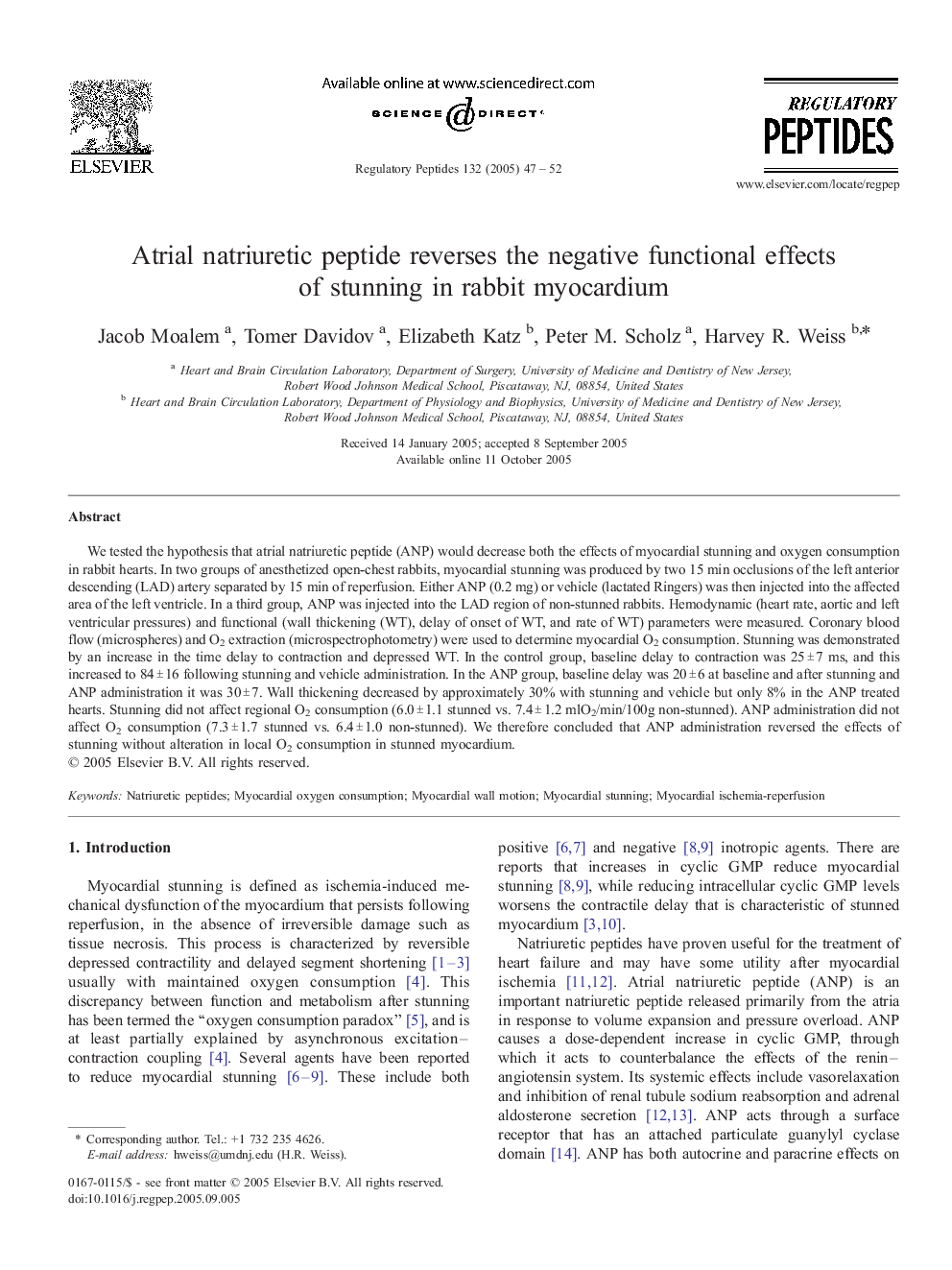| Article ID | Journal | Published Year | Pages | File Type |
|---|---|---|---|---|
| 9894349 | Regulatory Peptides | 2005 | 6 Pages |
Abstract
We tested the hypothesis that atrial natriuretic peptide (ANP) would decrease both the effects of myocardial stunning and oxygen consumption in rabbit hearts. In two groups of anesthetized open-chest rabbits, myocardial stunning was produced by two 15 min occlusions of the left anterior descending (LAD) artery separated by 15 min of reperfusion. Either ANP (0.2 mg) or vehicle (lactated Ringers) was then injected into the affected area of the left ventricle. In a third group, ANP was injected into the LAD region of non-stunned rabbits. Hemodynamic (heart rate, aortic and left ventricular pressures) and functional (wall thickening (WT), delay of onset of WT, and rate of WT) parameters were measured. Coronary blood flow (microspheres) and O2 extraction (microspectrophotometry) were used to determine myocardial O2 consumption. Stunning was demonstrated by an increase in the time delay to contraction and depressed WT. In the control group, baseline delay to contraction was 25 ± 7 ms, and this increased to 84 ± 16 following stunning and vehicle administration. In the ANP group, baseline delay was 20 ± 6 at baseline and after stunning and ANP administration it was 30 ± 7. Wall thickening decreased by approximately 30% with stunning and vehicle but only 8% in the ANP treated hearts. Stunning did not affect regional O2 consumption (6.0 ± 1.1 stunned vs. 7.4 ± 1.2 mlO2/min/100g non-stunned). ANP administration did not affect O2 consumption (7.3 ± 1.7 stunned vs. 6.4 ± 1.0 non-stunned). We therefore concluded that ANP administration reversed the effects of stunning without alteration in local O2 consumption in stunned myocardium.
Keywords
Related Topics
Life Sciences
Biochemistry, Genetics and Molecular Biology
Biochemistry
Authors
Jacob Moalem, Tomer Davidov, Elizabeth Katz, Peter M. Scholz, Harvey R. Weiss,
